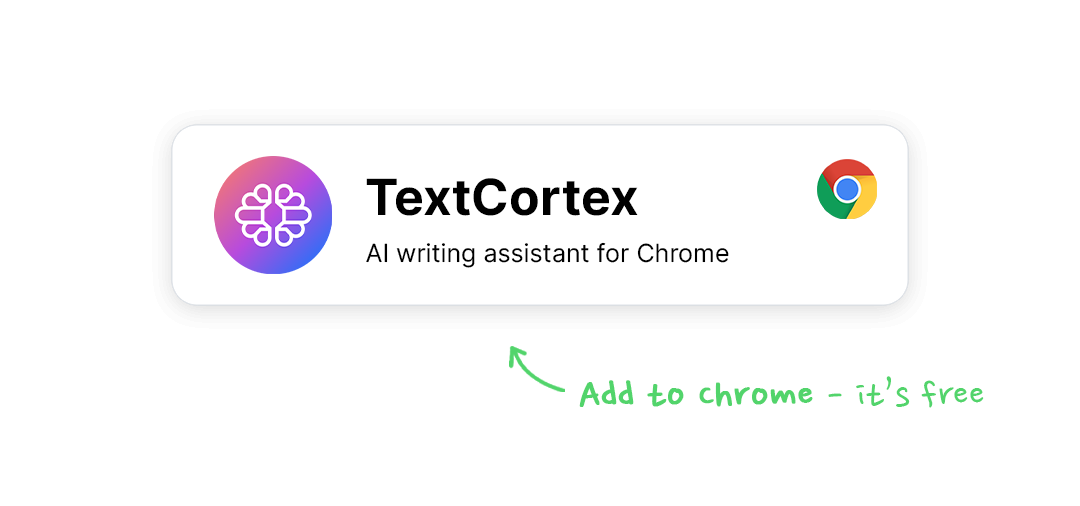When it comes to improving customer experience or converting leads and sales through your website - sometimes all that counts is what and how you write.
If you want your potential customers to like you, buy from you, or subscribe to your newsletter – the language you use makes a difference.
It doesn't matter how great your product is or even how large your budget is.
If your visitors don't feel like they are talking with a real person and they don't receive adequate information while they're on your website – they will bounce from your site in no time.
This is where a lot of businesses make mistakes.
Customer experience (CX) is a relatively new term. It's not as old as some of you probably think, even though a lot of people have been doing CX for years.
In this post, we'll explain what CX writing is, how it differs from other forms of content marketing, and how you can use it to improve the experience for your customers.
So if you’re ready, let’s begin!
What is CX Writing?
CX writing is a form of content marketing that's specifically designed to deliver a positive experience to your customers.
It's all about making the customer feel good and helping them achieve their goals.
Customer experience writing (CX) helps you build stronger connections with your customers by writing how-to guides and crafting blog posts with better visuals and infographics.
Some companies use CX writing as a way to position their brand and create a unique voice online.
Others use it to improve customer satisfaction by providing helpful, friendly, and useful information.

And some companies use it as an opportunity to add value while building customer relationships.
How it differs from other forms of content marketing?
CX writing greatly impacts your customers' interactions with your product, brand, and team.
While a lot of marketing newbies may confuse it with UX writing - it is related to understanding and designing users’ experiences which is usually related to digital products.
On the other hand, CX writing is understanding and designing experiences for the customers of the business, such as before, after, and in the moment of using the products.
It also differs from UX copywriting in that it doesn’t focus solely on what a user needs to do to complete a task but also on how they feel while doing so.

For example, Nike customers aren’t just concerned with the comfort of their shoes but also:
- How good their experience was while shopping online or at the physical store
- How good is the customer service support
- What kind of pre and post-purchase activities the brand provides
It's easy to think of CX as just another term for customer service or marketing, but they're different because they focus on different things:
Customer Service - Customer service centers on answering questions and resolving problems quickly and efficiently instead of building long-term relationships with customers through helpful content.
Marketing - Marketing focuses on selling products or services by creating awareness and persuading potential buyers instead of satisfying existing customers through helpful content.
Content Marketing - Content marketing combines aspects of customer service and marketing into one holistic strategy that builds trust with customers over time while helping them accomplish things they want uniquely.
Why should you implement CX writing to your content?
Investing time in CX writing can help you improve sales and boost your company's reputation by making customers feel valued and important.
In case that’s not convincing enough, hear the fact that 84% of companies that worked on improving their customer experience reported an increase in their revenue.
Also, here are some reasons why you should use CX writing:
Improve SEO - SEO benefits from a great user experience, so it makes sense to write pages that are easy to read, understand and navigate through.
Build trust - Great copywriting helps build trust between you and your customers because they feel like they're being treated well and that you’re giving them information in a unique way.
Create brand awareness - If you want people to know about your brand, then it makes sense to use CX writing as part of your marketing strategy.
Increase conversions - Good copywriting can increase conversions by making your site easier to use and understand.
So now that we’ve gone through the benefits and seen how it can help your business let’s get through the steps that will help you implement it within your article.
How to use CX writing to improve your customer experience
When you’re writing for the web, you need to think about more than just the words on the page.
You also need to consider how your audience will experience them.
Writing for experience means writing with empathy for your user and the context in which they'll read your content.
So here’s how to do that:
1. Defining the audience and content you’ll create for them
If you've ever worked in a retail store, you know how important good customer service can be.
The same goes for online businesses.
You might know how to create great products or market them, but if your customers don't feel like they're getting what they want when interacting with your company, none of that matters.
The first step to creating CX writing is understanding who your audience is and what their needs are.
This will help determine what kind of content you should create and how you should deliver it.
For example:
- A customer looking for information on a specific product will respond better to an article than an advertisement because it gives them more information about what they're interested in buying.
- A customer who just wants to browse through all your products will appreciate a list or table that shows everything available without having to click through multiple pages or links.
To decide how you’ll create your content, who you’ll write it for, and what’s the goal of it, first, you need to answer the following questions:
1. Who is your audience?
If you’re writing about an upcoming event, who will attend? If you’re writing about a new product feature, who will benefit from it? If you’re creating a video tutorial, who will watch it?
2. What is the purpose of your content?
Is it meant to educate customers about a product feature or service? Is it meant to provide them with information about an upcoming event? Is it meant to inspire them to take action?
3. Where will you publish the content?
How should this content be formatted based on where it will appear on your website? Should you publish text or video? Should we use images or graphs? Should we use jargon or plain language?

This process is called a content audit, which helps you map out all of your written assets and identify gaps in quality, reusability, and consistency.
2. Design for context
To write CX copy that people actually want to read, you have to consider all aspects of the customer journey.
From the moment when someone lands on your homepage for the first time all the way through to when they're ready to buy from you.
Contextual inquiry is a research method used by UX professionals that looks at the environment in which people use products (e.g., different locations, tasks).
It is also how those environments affect their experiences with those products (e.g., ease of use).
You need to understand what they're feeling and thinking at every step along their path so that when they do decide to buy something from your store or use one of your services.
Also, they need to have a positive experience and don't leave feeling frustrated or annoyed by something you've said or done.
If you make your content support their thoughts through the journey, you will be able to influence and streamline their decisions.
While talking about providing good CX writing within the articles, you need to make sure to create content that is:
- Easy to consume - Split it into small chunks that are easy to read, and make sure it’s optimized for mobile phones
- Provides context - Make sure that your content is supported with statistics, graphs, helpful images, examples, videos, quotes, and everything that can make your content more valuable, easy to consume, and understand.
- Valuable - Writing educational articles about what needs to be done won’t provide much value to the user. Showing them the exact steps on how to do that is what will make the difference and set yourself as an authority within your niche.

Pro tip: After explaining some concepts within the article, supporting those explanations with graphs, images, checklists, and so on will help your readers memorize those parts.
Not only it will be easier to read and understand, but it will also help you drive your audience successfully through the funnel.

Making sure to provide all of this within your article is what will educate your potential customers about your products or service and drive your conversions to go up.
3. Make it direct and actionable
As a CX writer, you are charged with creating content that helps your customers succeed using your product or service.
Customers don’t want to be talked at, they want to be understood and helped.
So, don’t just write about what you know when writing for customers.
Instead, listen and learn from them first.
Once you have an understanding of your audience, it’s time for an actionable copy!
Being direct and actionable means saying exactly what needs to be said for customers to succeed with whatever task they’re undertaking.
Also, make sure to explain everything, so there are no surprises along the way.

This makes it easy for customers because they don’t have to guess anything—all their questions are answered immediately.
And this is where designs can drastically help you explain everything like you’re writing to a 5-year-old kid.
4. Be clear, simple, and avoid ambiguity
If people must read a sentence twice to understand what it means, it's too long.
Make sure your writing doesn't contain any ambiguities or contradictions.
Here are a few examples that will help you recognize it and avoid it in the future:
- “We offer unlimited access” vs “We offer limited access,”
- “We ensure complete privacy” vs “We don't share information with third parties”
- “You can ask us any questions” vs “We won't answer any questions”,
- “Our service is available 24/7” vs “Our service is not available 24/7 but we do provide support”
This can happen when you use words that have more than one meaning or when you use words that have similar meanings but different connotations (for example, "free" vs "unlimited").
Making sure your content is clear and effortless to read will be much easier to avoid misunderstandings and complaints from your customers.

Improve your content for better results
Customers' experience in writing is of huge importance and plays a significant role for your conversions and ROI.
We hope these tips will help you identify your audience even broader and learn more about their problems and pain points so you can help them on a deeper level.
Meeting your audience better will help you put all that on paper, provide more context, and navigate them through the funnel effortlessly.
To help you create more content that includes all these rules and also ranks high, we created TextCortex.
TextCortex is an AI writing tool that saves up to 70% of your time and money by creating content in seconds.
How does it work?
While other AI writing tools use GPT-3 for every kind of content in a one-size-fits-all approach, we train smaller expert AIs on the specific use case.
TextCortex trains its use-case modules with 3 billion sentences to write unique, high-quality content on different topics, formats, and features.
Not only TextCortex follow all these rules for writing understandable and easy-to-read articles, but our creators lead to higher relevancy while significantly impacting the quality of your output.
How to use TextCortex to create content for your website blog?
First, head to your favorite textbox online, enter the title and keywords you want to include, highlight the text, choose the text length and creativity level, and then hit the "Long-form post" button.
It’s easy as that.
To improve the output results, all you have to do is add some context and additional information to your input.
Our AI experts do not use all the information, but it helps them better understand what you are looking for.
You can create a lot of content, but you can also make a lot of time and money savings.
With TextCortex, you can drastically improve your blog posts’ quality, leads, and conversions, and you can try it for free to see if it fits your needs.
This AI tool supports your writing team, so you can easily automate and scale the whole content production process.
It’s time to stop overthinking your content, reduce costs and time spent writing, and focus on what expresses your products best.
While you focus on business, let your content write itself using TextCortex.
Sign up now for free and see how TextCortex skyrockets your content creation instantly. 🚀
.jpg)




